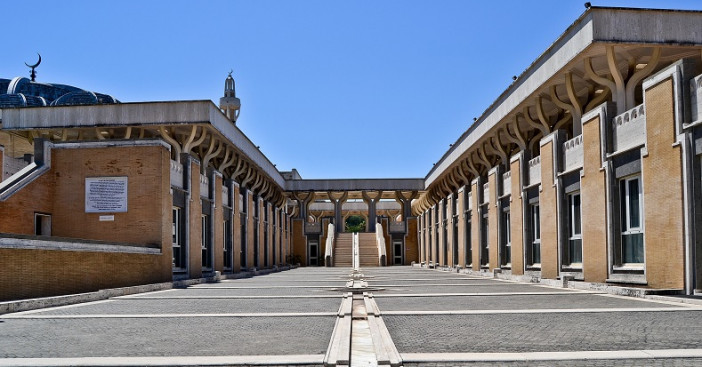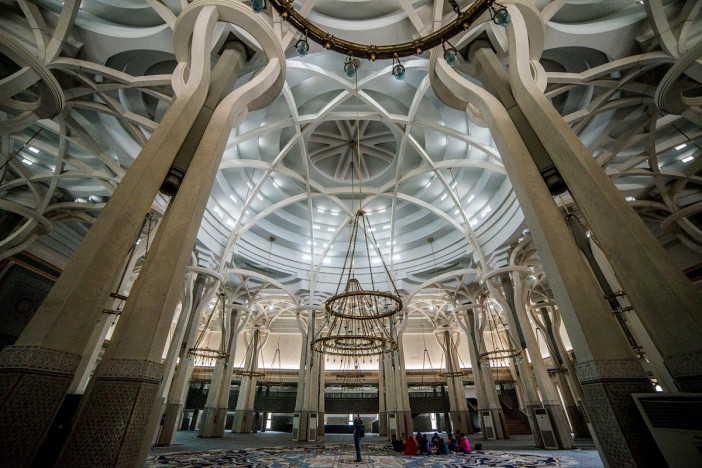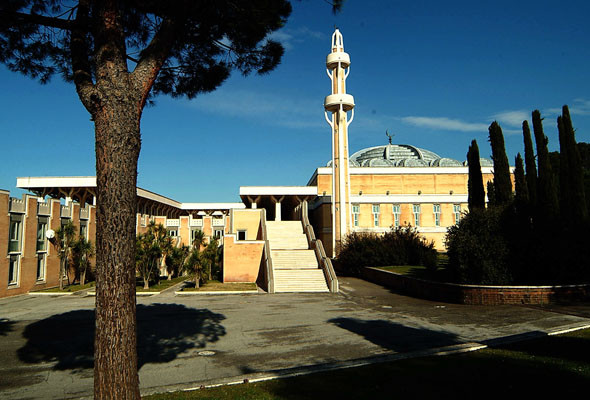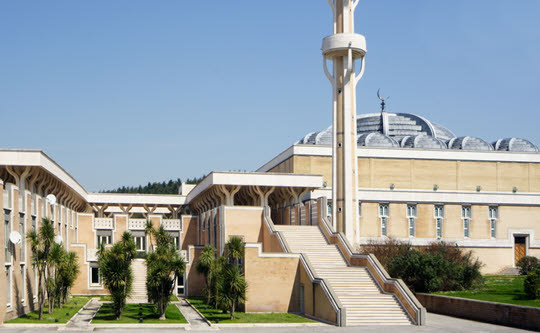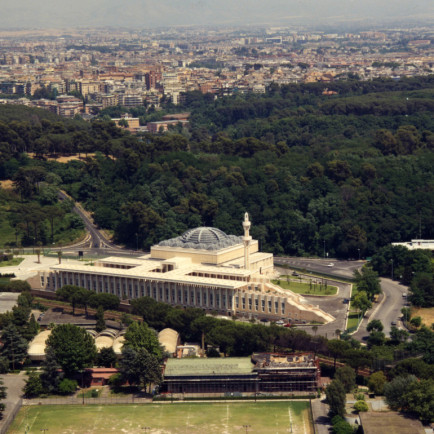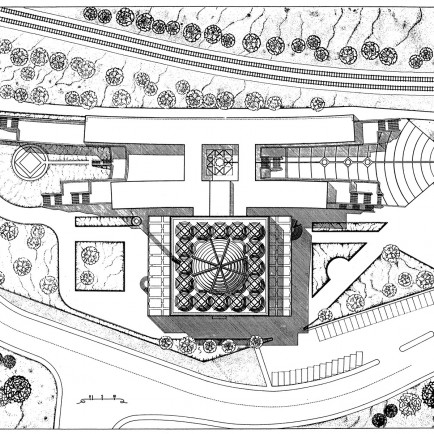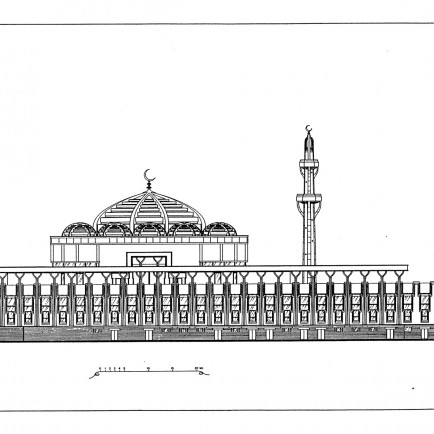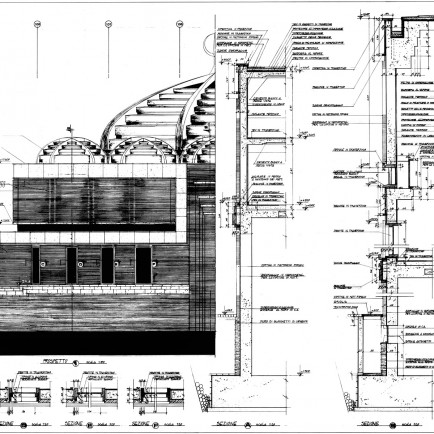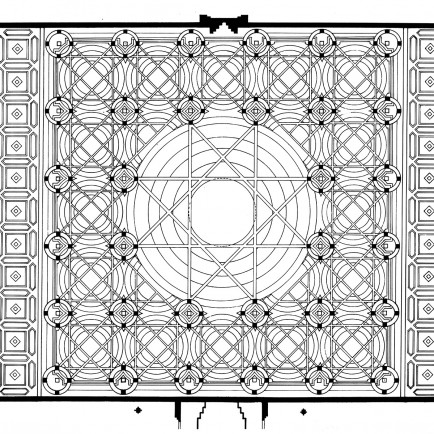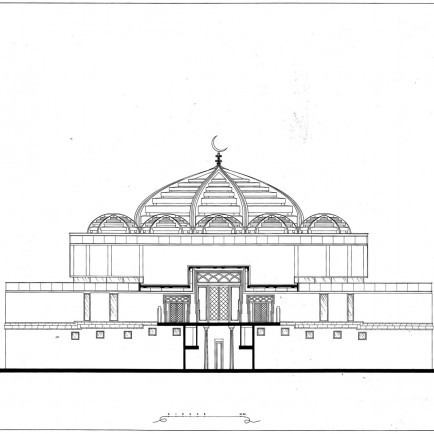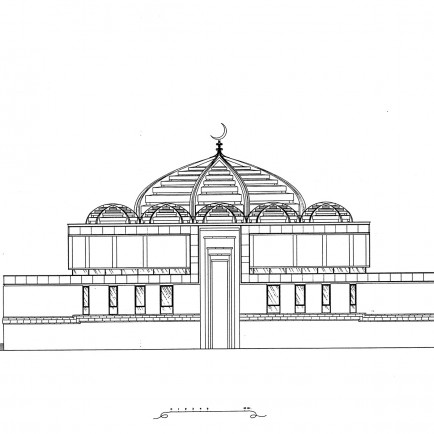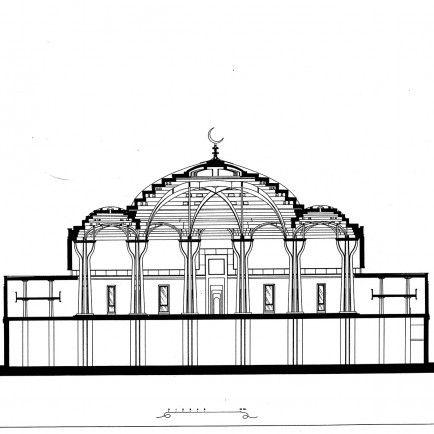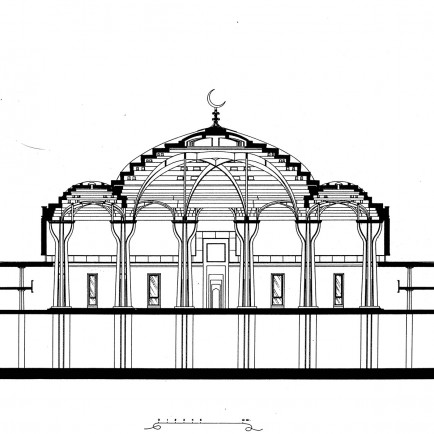Islamic Cultural Center of Italy Grand Mosque of Rome
History
The idea of an Eternal City mosque — the center of the Roman Catholic Church — is not new. A group of Arab ambassadors put forward a similar proposal to the Italian government more than 40 years ago. But because there was opposition, strong plans could not be produced until the 1970s. In 1973, King Faisal of Saudi Arabia was welcomed to Rome in accordance with the new spirit of ecumenism and discovered that previous opposition had evaporated.
The visit of Faisal also helped to fix the economic issues associated with the construction of a big new mosque. Muslim countries and people started donating the approximately $20 million that the mosque will cost after his visit.
There has been fast progress since then. A site, a seven-and - a half acre wooded tract at the foot of Monte Antenne, was given by the Rome City Council.
The sponsoring organization of the project, the Islamic Cultural Center of Italy, held an global contest and endorsed a complicated and innovative design presented by a three-man team of Sami Mousawi, an Iraqi architect working in England, and two Italian architects, Paolo Portoghesi and Vittorio Gigliotti.
Description
Islamic Cultural Center
of Italy Grand Mosque of Rome is the largest mosque in the western world ever
built, in terms of land area
It has an area of 30,000 m2 and can accommodate more than
12,000 people.
The building is in the Acqua Acetosa area, at the foot of the Monti Parioli, north of the
city.
Being the Western world's biggest mosque,[2] it
is the seat of the Italian Islamic Cultural Centre (Italian: Centro Culturale Islamico d'Italia).
In addition to be a meeting place
for religious activities, it provides cultural and social services variously
connecting Muslims together. It also holds teachings, wedding ceremonies,
funeral services, exegesis, exhibitions, conventions, and other essential
events.
The mosque was jointly founded by
the exiled Prince Muhammad
Hasan of Afghanistan and
his wife, Princess Razia[3][4] and
was financed by Faisal of Saudi Arabia, head
of the Saudi royal
family, as well as Custodian of the Two Holy Mosques.
The project was designed and directed by Paolo Portoghesi,
Vittorio Gigliotti and Sami Mousawi.
Its planning took more than ten
years: the Roman City Council donated the land in 1974, but the first stone was
laid only in 1984, in the presence of then President of the Italian Republic Sandro Pertini,
with its inauguration on 21 June 1995.
There was some opposition to the building of a mosque
but much of this dissipated when Pope John Paul II gave
his blessing for the project. One issue that had to be agreed was the height of
the minaret and its effect on the Rome skyline. In the end the issue was
resolved by shortening slightly the height of the minaret to be below that of
the dome of St Peter’s by approximately one meter.
(Source: pages 12-13 of the
September/October 1978 print edition of Saudi Aramco World).
Details
الموقع
00197 Rome, Metropolitan City of Rome, Italy
عدد المصليين
12000
تاريخ البناء
1994
Area
30000 SQM
الرسومات المعمارية
الخريطة
History
The idea of an Eternal City mosque — the center of the Roman Catholic Church — is not new. A group of Arab ambassadors put forward a similar proposal to the Italian government more than 40 years ago. But because there was opposition, strong plans could not be produced until the 1970s. In 1973, King Faisal of Saudi Arabia was welcomed to Rome in accordance with the new spirit of ecumenism and discovered that previous opposition had evaporated.
The visit of Faisal also helped to fix the economic issues associated with the construction of a big new mosque. Muslim countries and people started donating the approximately $20 million that the mosque will cost after his visit.
There has been fast progress since then. A site, a seven-and - a half acre wooded tract at the foot of Monte Antenne, was given by the Rome City Council.
The sponsoring organization of the project, the Islamic Cultural Center of Italy, held an global contest and endorsed a complicated and innovative design presented by a three-man team of Sami Mousawi, an Iraqi architect working in England, and two Italian architects, Paolo Portoghesi and Vittorio Gigliotti.
Description
Islamic Cultural Center
of Italy Grand Mosque of Rome is the largest mosque in the western world ever
built, in terms of land area
It has an area of 30,000 m2 and can accommodate more than
12,000 people.
The building is in the Acqua Acetosa area, at the foot of the Monti Parioli, north of the
city.
Being the Western world's biggest mosque,[2] it
is the seat of the Italian Islamic Cultural Centre (Italian: Centro Culturale Islamico d'Italia).
In addition to be a meeting place
for religious activities, it provides cultural and social services variously
connecting Muslims together. It also holds teachings, wedding ceremonies,
funeral services, exegesis, exhibitions, conventions, and other essential
events.
The mosque was jointly founded by
the exiled Prince Muhammad
Hasan of Afghanistan and
his wife, Princess Razia[3][4] and
was financed by Faisal of Saudi Arabia, head
of the Saudi royal
family, as well as Custodian of the Two Holy Mosques.
The project was designed and directed by Paolo Portoghesi,
Vittorio Gigliotti and Sami Mousawi.
Its planning took more than ten
years: the Roman City Council donated the land in 1974, but the first stone was
laid only in 1984, in the presence of then President of the Italian Republic Sandro Pertini,
with its inauguration on 21 June 1995.
There was some opposition to the building of a mosque
but much of this dissipated when Pope John Paul II gave
his blessing for the project. One issue that had to be agreed was the height of
the minaret and its effect on the Rome skyline. In the end the issue was
resolved by shortening slightly the height of the minaret to be below that of
the dome of St Peter’s by approximately one meter.
(Source: pages 12-13 of the
September/October 1978 print edition of Saudi Aramco World).


